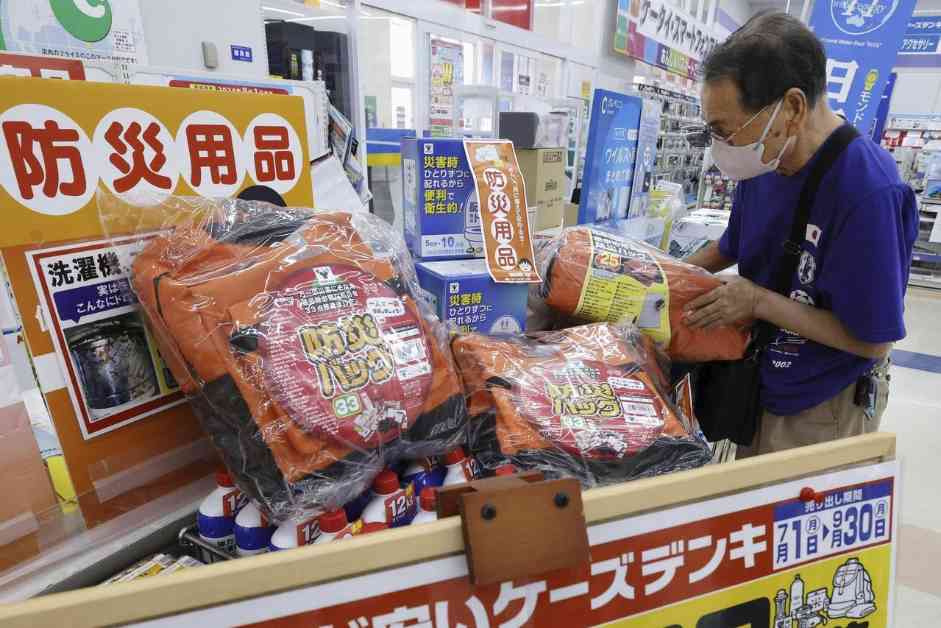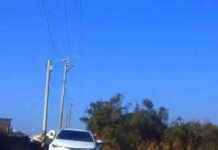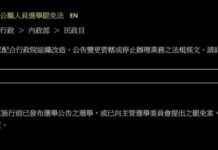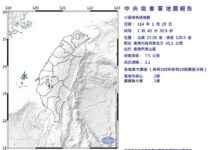Japan Lifts South China Sea Trench Earthquake Warning – Assessing Social & Economic Losses
Japan’s Meteorological Agency lifted the temporary earthquake warning issued in response to the strong earthquake in Miyazaki on August 8, as no significant changes were observed. While the absence of a major earthquake is positive news, the impact on affected businesses is distressing. In Shirahama Town, Wakayama Prefecture, where a summer resort area is located, plans for summer tourism profits were dashed due to the warning, leading the town mayor to consider petitioning in Tokyo.
According to reports from Nikkei News and Asahi TV, Shirahama Town Mayor Yasuhiro Oe stated on the 15th that the “South China Sea Trench Earthquake Temporary Information” resulted in a series of cancellations of hotel reservations, with one hotel alone suffering losses of up to 56 million Japanese yen. The total estimated losses are reported to be as high as 500 million Japanese yen (approximately 1.08 billion New Taiwan dollars), prompting a request for government assistance.
Shirahama Town boasts a seaside resort area, with accommodation numbers reaching up to 200,000 guests in August in previous years. However, due to the Meteorological Agency’s issuance of the temporary warning, Shirahama Town announced the closure of four beach facilities from the 9th to the 14th for safety reasons.
Moreover, the timing of the Meteorological Agency’s warning coincided with Japan’s Obon holiday, exacerbating the losses for businesses. Takahiro Numata, the president of the Kishu Shirahama Onsen Musashi Ryokan, lamented, “The losses are greater than during the COVID-19 pandemic. How can we recover? We hope to receive support in terms of travel to help us recoup the losses.” Mayor Oe expressed regret, stating, “It is a shame that this happened during the busiest season. However, the only answer to safeguard everyone’s lives was to close the beach facilities. I do not believe I made a mistake.” Regarding the losses in the accommodation industry, Oe mentioned, “Although it is uncertain if the government will accept, we hope to receive support.” He plans to visit Tokyo by the 21st to appeal to the Cabinet Office.
Seismology Professor Takeshi Sagitani from Nagoya University believes that there is an imbalance between the risk level of earthquakes and the societal responses taken. Although the risk of a major earthquake following a seismic event has increased, the probability remains very low. Nevertheless, the suspension of express trains, closure of beach facilities, and cancellation of Prime Minister Fumio Kishida’s visit to Central Asia led Sagitani to comment, “The various responses resemble the precautionary statements from the period of the previous Great Earthquake Law.”
The South China Sea Trench extends from the Tokai region to the Pacific side of Shikoku and eastern Kyushu, with a depth of approximately 4,000 meters, making it a relatively shallow trench. A “South China Sea Trench Mega-Earthquake” refers to a massive earthquake occurring at the boundary of the Suruga Bay off Shizuoka Prefecture to the boundary of the Hyuga-nada off Miyazaki Prefecture, typically occurring every 100 to 150 years. The most recent event was the 1946 Showa Nankai Earthquake, which was 78 years ago, increasing the likelihood of another occurrence.
The Japanese government previously believed that by detecting precursors to earthquakes along the South China Sea Trench, especially the Nankai Trough Earthquake originating near Shizuoka Prefecture, short-term earthquake warnings could be issued. Based on this assumption, Japan established the Great Earthquake Law in 1978, allowing the Prime Minister to declare an alert to halt transportation and production activities in the affected areas.
However, following the unexpected 2011 3/11 Great East Japan Earthquake, it became evident that current scientific technology “cannot make highly accurate earthquake predictions.” As a result, Japan revised the measures under the Great Earthquake Law to issue “temporary information” to increase public awareness and enhance disaster preparedness.
Many seismologists find it challenging to interpret the temporary information released by the Meteorological Agency, as it is based on general theories derived from earthquake data worldwide, rather than a specific analysis of phenomena along the South China Sea Trench. The accuracy in predicting the possibility of consecutive massive earthquakes is very low in scientific terms.
Nonetheless, Sagitani noted that if a magnitude 8.0 or higher earthquake occurs at the presumed source region’s plate boundary, issuing a “Mega-Earthquake Alert” is understandable based on past experiences. He emphasized that Japan needs to achieve societal consensus on how to respond when issuing “temporary information” in the future, requiring continuous review and adjustment.
In conclusion, Japan is in the process of evaluating the social and economic losses incurred due to the lifting of the South China Sea Trench earthquake warning. The impact on businesses in Shirahama Town highlights the challenges faced by local economies when faced with unexpected warnings and closures. Moving forward, it is essential for Japan to strike a balance between risk assessment and response strategies to effectively manage potential seismic events in the future.












